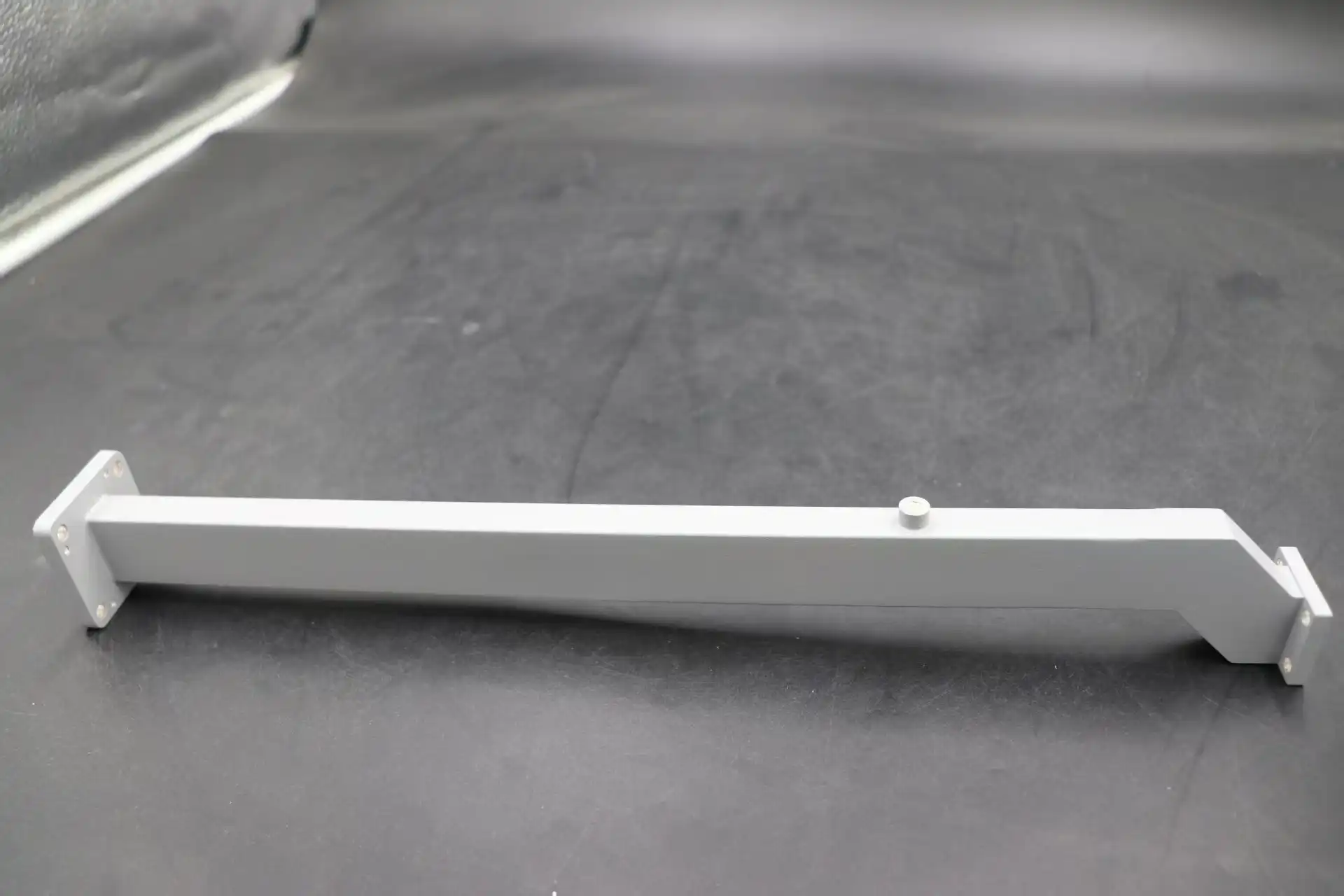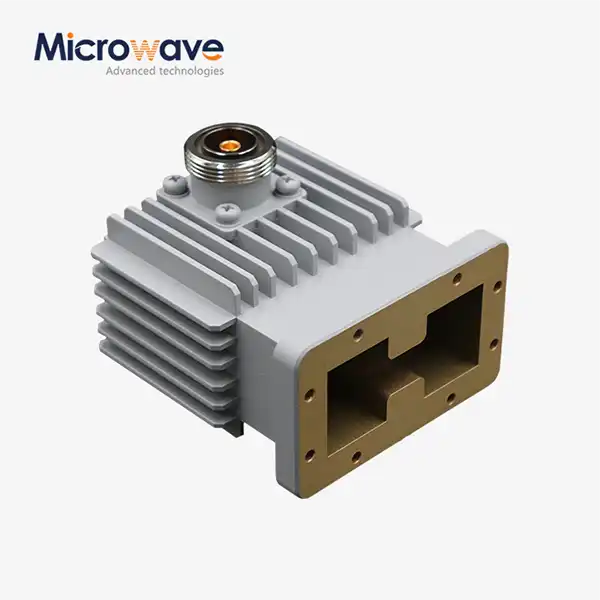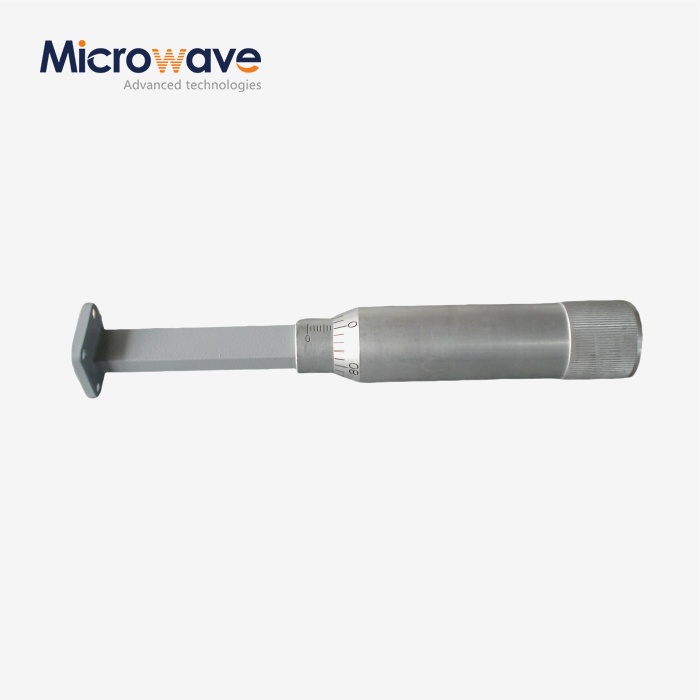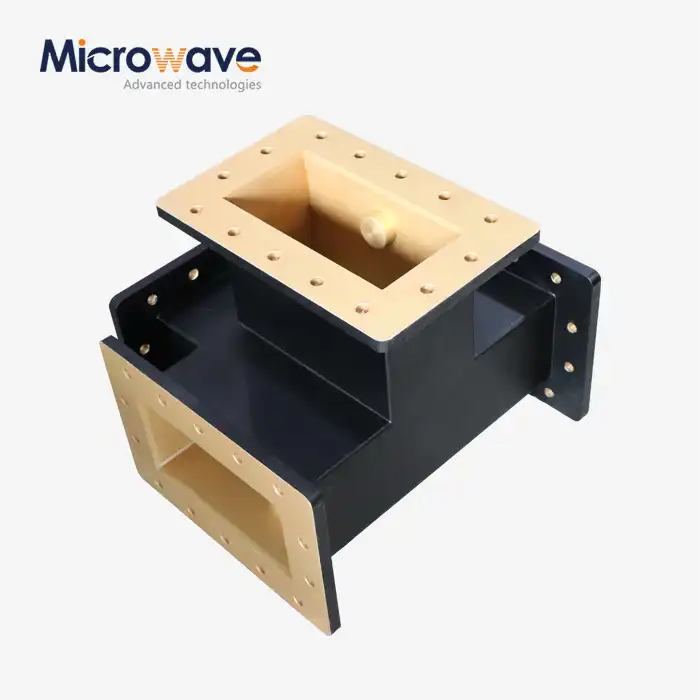5 Common Applications Where a Double-bend Waveguide Makes All the Difference
In today's space-constrained microwave systems, engineers face a critical challenge: how do you route high-frequency signals through tight corners without compromising signal integrity? Traditional straight waveguides and gradual bends often demand too much real estate, while sharp turns introduce devastating reflections and losses. Enter the double-bend waveguide—a precision-engineered solution that delivers efficient 90-degree signal routing in compact spaces. This article explores five mission-critical applications where a double-bend waveguide doesn't just help—it makes all the difference between system success and costly failure.
Understanding Double-bend Waveguide Technology in Modern RF Systems
The double-bend waveguide represents a sophisticated approach to signal routing challenges that plague modern microwave and millimeter-wave systems. Unlike simple curved bends that require extensive space or abrupt 90-degree turns that generate significant reflections, the double-bend waveguide employs two precisely angled sections—typically at 45 degrees each—to achieve direction changes while maintaining signal integrity. This dual-bend architecture exploits a fundamental principle of electromagnetic wave behavior: when properly spaced at odd multiples of quarter-wavelengths, the reflections generated at the first bend are effectively canceled by those at the second bend, resulting in minimal overall signal loss and superior voltage standing wave ratio performance. Advanced Microwave's double-bend waveguide is engineered as a high-performance component designed to meet the complex demands of modern microwave and millimeter-wave applications. The layout design maximizes the reduction of signal reflection and loss through careful geometric optimization.

Constructed from oxygen-free copper and other high-conductivity metals with precision polishing, these components minimize loss and signal attenuation to levels approaching theoretical limits. The double-bend structure efficiently transmits signals along specified paths while the bends control signal direction with minimal distortion, making them invaluable in communication and signal processing systems where traditional straight waveguides prove impractical. The technical specifications of the double-bend waveguide reveal its precision engineering capabilities. Operating across frequency ranges such as 19.2 to 21.2 gigahertz with voltage standing wave ratios not exceeding 1.1 and insertion losses below 0.1 decibels, these components demonstrate exceptional electrical performance. The aluminum construction with gold plating combines mechanical strength with optimal conductivity. The compact design enables efficient space utilization while signal direction control offers routing flexibility unavailable with conventional waveguide configurations. Minimized signal loss ensures efficient transmission, reduced interference from signal confinement, and low reflection characteristics maintain superior signal integrity—all critical factors in the five applications we'll explore.
Application One: Satellite Communication Ground Stations
Satellite ground stations represent one of the most demanding environments for double-bend waveguide technology, where every tenth of a decibel matters in maintaining reliable links across thousands of kilometers. These facilities must route high-frequency signals from feed horns positioned at the focal point of large parabolic reflectors down through complex mechanical structures to receiver equipment housed in temperature-controlled equipment rooms. The physical constraints are severe: signals must navigate around azimuth and elevation drive mechanisms, pass through rotating joints, and traverse structural supports—all while maintaining the extraordinarily low noise figures required for detecting weak signals from distant satellites. The double-bend waveguide excels in this application because satellite ground stations cannot afford the luxury of extensive straight runs or gradual bends. The feed assembly at the antenna focal point must connect to low-noise amplifiers and down-converters, but the direct path is invariably blocked by mechanical structures. A double-bend waveguide provides the necessary 90-degree turn in a compact footprint, fitting within tight spaces between drive motors and support structures.
More critically, the reflection cancellation property of properly designed double-bend waveguides ensures that precious signal power isn't lost to standing waves—a consideration of paramount importance when dealing with signals that may have traveled from geostationary orbit 36,000 kilometers above Earth. Advanced Microwave Technologies Co., Ltd. has developed double-bend waveguide solutions specifically optimized for satellite ground station applications, ensuring efficient signal transfer for high-definition video, data, and voice communications. The company's expertise in antenna measurement systems, including their state-of-the-art 24-meter microwave darkroom with test frequency ranges spanning 0.5 to 110 gigahertz, provides the verification capabilities necessary to guarantee that these critical components meet the stringent performance requirements of satellite communication systems. With ISO 9001:2015 certification and over 20 years of experience in microwave products, Advanced Microwave delivers the reliability that satellite operators demand for their ground infrastructure.
Application Two: Military Surveillance and Defense Radar Systems
Military surveillance radars operate in some of the harshest and most demanding environments imaginable, where the double-bend waveguide serves as a critical enabler of compact, ruggedized system architectures. Modern phased array radars and active electronically scanned arrays demand hundreds or even thousands of individual transmit and receive channels, each requiring precise signal routing from central processing units to antenna elements distributed across the array face. The challenge intensifies in mobile military systems—mounted on vehicles, ships, or aircraft—where space comes at an absolute premium and every cubic centimeter must be optimized for performance, cooling, or structural integrity.
Defense radar applications utilize double-bend waveguides to navigate the complex three-dimensional routing challenges inherent in tightly packed electronic warfare systems. These components enable signal paths to dodge structural members, avoid thermal hot spots from power amplifiers, and maintain separation from sensitive low-noise receiver channels to prevent interference. The compact design of double-bend waveguides allows radar engineers to achieve dense packing of radio-frequency components while the low reflection characteristics ensure that transmitted power reaches the antenna elements efficiently rather than being wasted in standing waves that could generate false targets or reduce detection range. The military surveillance application places extraordinary demands on waveguide component quality and consistency. Advanced Microwave Technologies Co., Ltd. addresses these requirements through comprehensive quality control procedures adherent to ISO 9001:2015 standards, ensuring each component meets rigorous specifications. Their double-bend waveguides feature enhanced performance in tight spaces, making them perfect for applications where the waveguide must navigate obstacles or fit into confined military equipment bays. The company's defense industry experience, combined with their advanced measurement capabilities up to 110 gigahertz, ensures that these components deliver the performance reliability that defense contractors require for strengthening surveillance capabilities and threat detection systems.
Application Three: Aviation and Aerospace Communication Systems
Aviation communication systems present unique challenges that make double-bend waveguide technology indispensable for reliable aircraft-to-ground and air-to-air data links. Aircraft structures impose severe constraints on equipment installation, with every component competing for limited space within fuselage sections, wing assemblies, and tail structures while simultaneously meeting stringent weight restrictions and vibration tolerance requirements. Communication antennas must be positioned on aircraft exteriors for optimal coverage patterns, yet the associated radio-frequency equipment typically resides in equipment bays located elsewhere in the airframe, separated by bulkheads, structural frames, and other systems. The double-bend waveguide proves essential in aviation applications because it enables efficient signal routing through the complex internal geometry of aircraft without requiring extensive modifications to load-bearing structures.
When installing upgraded communication systems in existing aircraft, engineers frequently encounter situations where the ideal straight-line path between antenna and transceiver is blocked by fuel tanks, hydraulic lines, or primary structural elements that cannot be relocated or penetrated. The double-bend waveguide provides a solution that fits within available spaces between structural frames or within fairings, achieving the necessary direction changes while maintaining the low insertion loss critical for maximizing communication range and data throughput. Air traffic control radar systems also benefit significantly from double-bend waveguide technology, particularly in the feed networks that connect transmitters to rotating antenna assemblies. Advanced Microwave Technologies Co., Ltd. offers custom double-bend waveguide capabilities that excel in aviation scenarios, providing ultra-sharp beamforming for accurate aircraft tracking even in adverse weather conditions. The company's products serve the aviation and aerospace industry with components that meet the reliability standards demanded by safety-critical applications. Their aluminum construction with precision gold plating delivers the optimal combination of light weight and electrical performance required for airborne systems, while their comprehensive testing capabilities ensure that every component can withstand the vibration, temperature cycling, and electromagnetic interference environments encountered in aviation service.

Application Four: Compact Weather Monitoring and Atmospheric Research Systems
Weather radar and atmospheric research systems have evolved dramatically toward more compact, deployable architectures that benefit immensely from double-bend waveguide integration. Modern weather surveillance requires distributed networks of radar installations, including mobile units that can be rapidly deployed to monitor developing storm systems, study atmospheric phenomena, or provide coverage in remote areas. These systems must pack significant radio-frequency power generation, signal processing, and antenna mechanisms into transportable shelters or vehicle-mounted configurations where every dimension is constrained by transportation requirements and operational deployment scenarios. The double-bend waveguide addresses critical routing challenges in weather monitoring systems where radar antennas rotate continuously to scan the atmosphere while transmitter and receiver equipment remains stationary. The signal path from fixed equipment to the rotating antenna assembly must traverse through mechanical interfaces and accommodate the azimuth rotation mechanism—a challenge that demands compact, efficient waveguide routing. Double-bend waveguides enable the necessary 90-degree transitions from vertical equipment racks to horizontal rotation mechanisms in minimal space, ensuring that the installation fits within standard equipment shelters while maintaining the low loss essential for detecting weak atmospheric returns from distant precipitation or clear-air turbulence.
Advanced Microwave Technologies Co., Ltd. serves the weather monitoring industry with double-bend waveguide solutions specifically designed for the unique requirements of meteorological radar systems. The company's flexible application capabilities and minimized signal loss characteristics prove particularly valuable in weather radar installations where system sensitivity directly determines maximum detection range and accuracy of precipitation measurements. Their products' reduced interference properties help maintain the signal purity necessary for advanced polarimetric weather radars that rely on precise phase relationships between orthogonal polarization channels. With comprehensive support from prototype development through mass production and backed by ISO 14001:2015 environmental certification, Advanced Microwave delivers solutions that meet both the technical and operational requirements of weather monitoring networks worldwide.
Application Five: Telecommunications Infrastructure and 5G Networks
The telecommunications sector's evolution toward 5G and millimeter-wave frequencies has created unprecedented demand for compact, high-performance double-bend waveguide components in both macro cell tower installations and dense urban small cell deployments. Modern cellular base stations must accommodate multiple frequency bands, MIMO antenna arrays, and beamforming networks within increasingly constrained tower-mounted radio equipment, where wind loading, weight restrictions, and aesthetic considerations limit the physical envelope available for each radio unit. The shift to higher frequencies amplifies these challenges because waveguide dimensions scale inversely with frequency—millimeter-wave systems require correspondingly small waveguides that must still traverse the physical distances between antenna elements and transceiver chains.
Double-bend waveguides enable telecommunications equipment designers to create compact radio heads that fit multiple frequency bands within a single radome enclosure while maintaining the low loss and high power handling required for maximizing cell coverage and capacity. The feed networks that distribute signals to individual antenna elements in massive MIMO arrays particularly benefit from double-bend waveguide technology, where hundreds of signal paths must be routed efficiently through three-dimensional space without excessive bulk or weight. The component's ability to achieve sharp direction changes while preserving signal integrity allows denser packing of radio-frequency components, reducing overall antenna unit size and enabling deployment on structures where larger equipment would be prohibited by structural load limits or zoning regulations. Advanced Microwave Technologies Co., Ltd. provides telecommunications operators and equipment manufacturers with double-bend waveguide solutions optimized for next-generation network infrastructure. The company's expertise in feed network customized products proves particularly relevant for telecommunications applications, where they optimize long-distance signal propagation to bring fast internet to rural areas and power industrial Internet of Things deployments. Their double-bend waveguides' low reflection and enhanced performance characteristics support the stringent requirements of 5G millimeter-wave systems operating at frequencies approaching 110 gigahertz. With OEM services encompassing custom design based on client application needs, expert material selection, precision manufacturing, and comprehensive testing, Advanced Microwave delivers the integrated production and research and development capabilities that telecommunications infrastructure projects demand for reliable deployment at scale.
Conclusion
Double-bend waveguides solve critical space and performance challenges across satellite communications, defense radar, aviation, weather monitoring, and telecommunications infrastructure. Their compact design and superior signal integrity make them indispensable for modern microwave systems where traditional routing solutions fail.
Cooperate with Advanced Microwave Technologies Co., Ltd.
Ready to optimize your microwave system design with precision-engineered double-bend waveguides? Advanced Microwave Technologies Co., Ltd. stands as your premier China double-bend waveguide manufacturer with over 20 years of proven experience delivering high-quality double-bend waveguides to global markets. As a leading China double-bend waveguide supplier, we offer competitive double-bend waveguide prices without compromising on performance—our ISO 9001:2015 certification guarantees every component meets international quality standards.
Looking for a reliable China double-bend waveguide factory for China double-bend waveguide wholesale orders? Our perfect supply chain system ensures fast delivery times that keep your project on schedule. Whether you need standard double-bend waveguides for sale or custom OEM solutions, our professional technical research and development team will design components precisely matched to your specifications. From initial prototyping to mass production, our strict quality control and comprehensive testing in our advanced 24-meter microwave darkroom (0.5-110 gigahertz capability) ensure optimal performance.
Partner with a China double-bend waveguide manufacturer that serves aviation, aerospace, satellite communications, defense, and telecommunications sectors worldwide. Contact craig@admicrowave.com today to discuss your project requirements and receive a detailed quotation. Bookmark this page for easy reference whenever waveguide routing challenges arise in your designs—our team stands ready to transform your technical obstacles into elegant, high-performance solutions.
References
1. Pozar, David M. Microwave Engineering (4th Edition). John Wiley & Sons. 2012.
2. Marcuvitz, Nathan. Waveguide Handbook. Institution of Engineering and Technology. 1986.
3. Collin, Robert E. Foundations for Microwave Engineering (2nd Edition). IEEE Press. 2001.
4. Saad, Theodore S. Microwave Engineers' Handbook (Volume 1). Artech House. 1971.
YOU MAY LIKE
 VIEW MOREHigh Power Waveguide to Coaxial Adapter
VIEW MOREHigh Power Waveguide to Coaxial Adapter VIEW MOREWaveguide Loop Coupler
VIEW MOREWaveguide Loop Coupler VIEW MOREEnd Launch Double Ridged WG To Coaxial Adapter
VIEW MOREEnd Launch Double Ridged WG To Coaxial Adapter VIEW MOREEnd Launch Waveguide to Microstrip Adapter
VIEW MOREEnd Launch Waveguide to Microstrip Adapter VIEW MOREWaveguide Sliding Termination
VIEW MOREWaveguide Sliding Termination VIEW MOREWaveguide Unmatched Termination
VIEW MOREWaveguide Unmatched Termination VIEW MOREMagic Hybrid Tee
VIEW MOREMagic Hybrid Tee VIEW MOREH-Plane Tee
VIEW MOREH-Plane Tee




